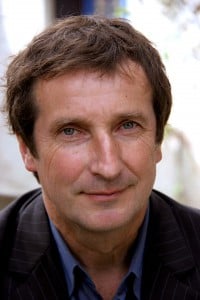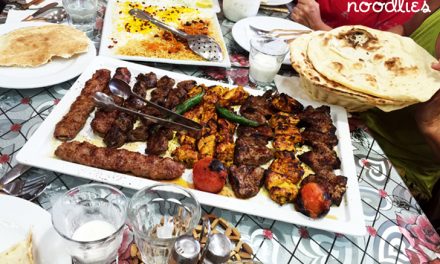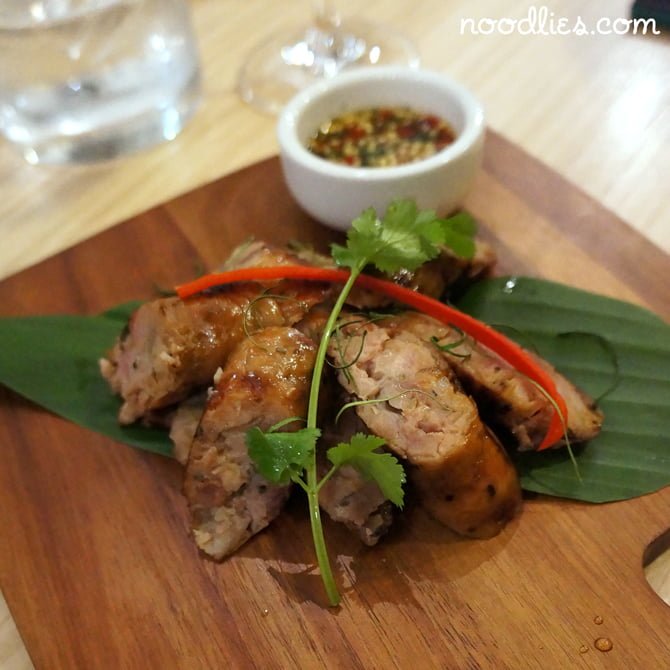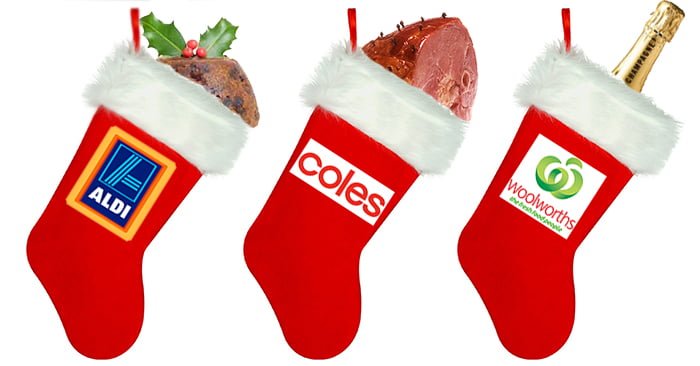Is there room in Sydney for another restaurant guide?
 Food is no longer the flavour of the month for mainstream publishers. The papers and magazines are cutting costs, and that means (sadly) chopping off food reviewers and their associated food expenses. It seems running recipes is much better for the bottom line; the accountants love it, cheap content that won’t date (unlike pesky restaurants that open and close) and it’s attractive to food advertisers. Grim but realistic.
Food is no longer the flavour of the month for mainstream publishers. The papers and magazines are cutting costs, and that means (sadly) chopping off food reviewers and their associated food expenses. It seems running recipes is much better for the bottom line; the accountants love it, cheap content that won’t date (unlike pesky restaurants that open and close) and it’s attractive to food advertisers. Grim but realistic.
When it comes to food guidies, Fairfax’s Good Food brand is a local giant, covering just about every niche from the prestigious Good Food Guide (think hats) to Good Food Under $30 Guide (formerly Everyday Eats, think stars) and Good Pub Food Guide. While Michelin guides have not made it to our shores, last year, Gault&Millau surprised everyone by launching in Sydney.
READ: Hatted restaurants in 2014 Gault&Millau Restaurant Guide
And it looks like they’re back for 2015 – Marc Esquerrè, Gault&Millau France Chief Judge is currently in town. Noodlies, Sydney food blog caught up with him for this Q&A.
In this session, Esquerrè:
- defends their claim of being the only “independent” restaurant guide in Sydney
- responds to why there is no Gault&Millau guides for the US and Asia
- explains the key differences in Sydney restaurants compared to those in Paris
- talks about his views on bloggers and other food review sites
- defends their scoring system which is weighed towards food and the chef, with much less emphasis on environment and service
Love your comments.. leave one and join the conversation.

Noodlies: There are other, more-established guides in Australia tell us why you feel there’s a need for Gault&Millau in Sydney?
Marc Esquerrè: It was very important to bring the guide to Australia. People here were interested in something new – it is important to have a new comparison. It is a new world here with the return of new taste, new cuisine – and Gault&Millau brings a new level of benchmarking, a strategic form of reviewing. We are another opinion and it is good to have a partner with the same image and philosophy here in Australia.
What do you mean when you say yours is the only “Independent” restaurant guide in Sydney?
We say we are the only independent restaurant guide as we are not owned by anyone else – we are Gault&Millau – our reviewing process is completely anonymous, we are just like any other customer – our reviews are a genuine representation of an experience at that restaurant. They never know who we are, we pay the bill in full – judges never reveal themselves. Our experiences are what happen every day.
How many ‘local’ judges are there for the Sydney guide? And how did you select them?
There are 20 judges in our Sydney team. Our judges are passionate epicureans who have successfully completed the training and meet the criteria required to become a judge.
You came to Australia to sample some of the our restaurants, what do you think is different about the Sydney dining scene compared to say, Paris?|
It is very different, I find Sydney is very open to new trends and cooking from every part of the world. Sydney is always progressing with new trends and the customer is always interested to find something new tomorrow. In Paris there is more pre-judgement – we believe French is best, that we are the champions of food – it is a different mentality – people are very sure of what they like especially because in Paris you can get what you want at an excellent level.
Overseas, some of the finest restaurants are located in hotels. That’s not the case in Sydney. What do you put it down to?
I think it may even be down to the climate and accessibility of Sydney – many people when they stay in a hotel in Sydney prefer to leave and visit local restaurants where as in say Paris with the weather people prefer to dine near or where they are staying. Additionally the big hotels in cities such as Paris and New York they have been established for a longer period than hotels in Australia – so there is a rich history that attracts visitors.
What are three things you look for when judging a dish?
Number one is what I call the dressing – it’s the personality of the dish, the first impression. The second is obviously the taste and the third is ‘do I want some more?’
The food scene is dynamic with restaurants opening and closing rapidly, the obvious example is Restaurant Atelier closing prior to the release of the 2014 guide – do you feel a printed guide, like printed newspapers is a model under pressure?
We know everything is moving online which is why we complement the printed guide with our online reviews that we can constantly update but the printed guide will always have a place in our business module – the printed guide appeals to a different type of consumer, it is understandable why many others are moving to almost all online or reducing their print runs but we will always have both. By establishing our online systems it means that any pressure our printed guide faces we always have our other portal.
You also have an online-only subscription service, does that content change more frequently than the printed edition?
Yes, the online service can be very reactive – when a chef changes or a restaurant closes we can reflect that – the problem with the printed guide once it goes into production no more changes can be made so there is a window of a few months where if anything happens we are unable to show these adjustments in the printed version. This is why having an online arm of the company is so important.
Do you think the focus on chefs and food (apparently 90% of the score) only builds up chefs egos while down-playing decor and in particular service?
A famous chef was once asked “who is cooking when you are not here” and he said “the same as when I am here.” A true chef’s talents show in his or her team. While we do put a focus on the chefs we believe the whole dining experience comes back to the chef. This is only a very recent shift though, the celebrity used to be the owner and even the maître d. A talented chef will not let his or her ego jeopardise the standards of the whole restaurant.
Do you think this may encourage rude and snobby service?
No because the feel of the restaurant should flow down from the chef – if he is not passionate or excited or true to his craft this will show in the service.
The growth of the internet has brought about the rise of the food bloggers, who may not have food or writing experience. There are also citizen reviewers thanks to sites like Urbanspoon, Yelp and others. Do you think they have a role in food review/criticism scene? Is this instant expert democratisation of food reviewing a good or bad thing? Why?
Yes they do have a role- they are important and very influential. They are not the same as expert opinions but they are complimentary to the discussion and a welcome opinion to many consumers. When they are reasonable, fair and respectful – they provide a needed addition to the food review landscape.
Gault&Millau guides are produced in seven countries (Australia, France, Switzerland, Belgium, Hungary, Austria and Germany). Firstly, why have you not launched a US guide?
The reason why at this stage there is not a Gault&Millau in the USA is because a gentleman did buy the license to produce the guide in the states but he has never initiated production. So until he does in the license period we are unable to set up the guide.
Secondly, the Asian region is growing in size and influence. Many love food – Hong Kongers are renowned for it. What has been the reason you have not launched in an Asian country?
There are a few reasons why we have not set up in any Asian countries yet – the simple reason being it is very difficult, we watched our Michelin friends struggle to establish themselves there. It is very culturally diverse and we would have to work very closely with experts of that country to ensure the standards of the guide are upheld. Even though I have dined at over 4000 Japanese restaurants I am no expert, I am humble enough to admit that it is not a culture I am well educated on and could not give it the respect it deserves. There are many cultural obstacles to overcome to produce an accurate guide – we don’t make a guide in Australia with French people – we would need a team of local experts to support us – it is something we hope to work towards but it will take us some time to produce.







I hope one day I can say I’ve dined at 4000 Japanese restaurants.
Last stop – Michelin reviewers hit our shores. Now that would make a splash.